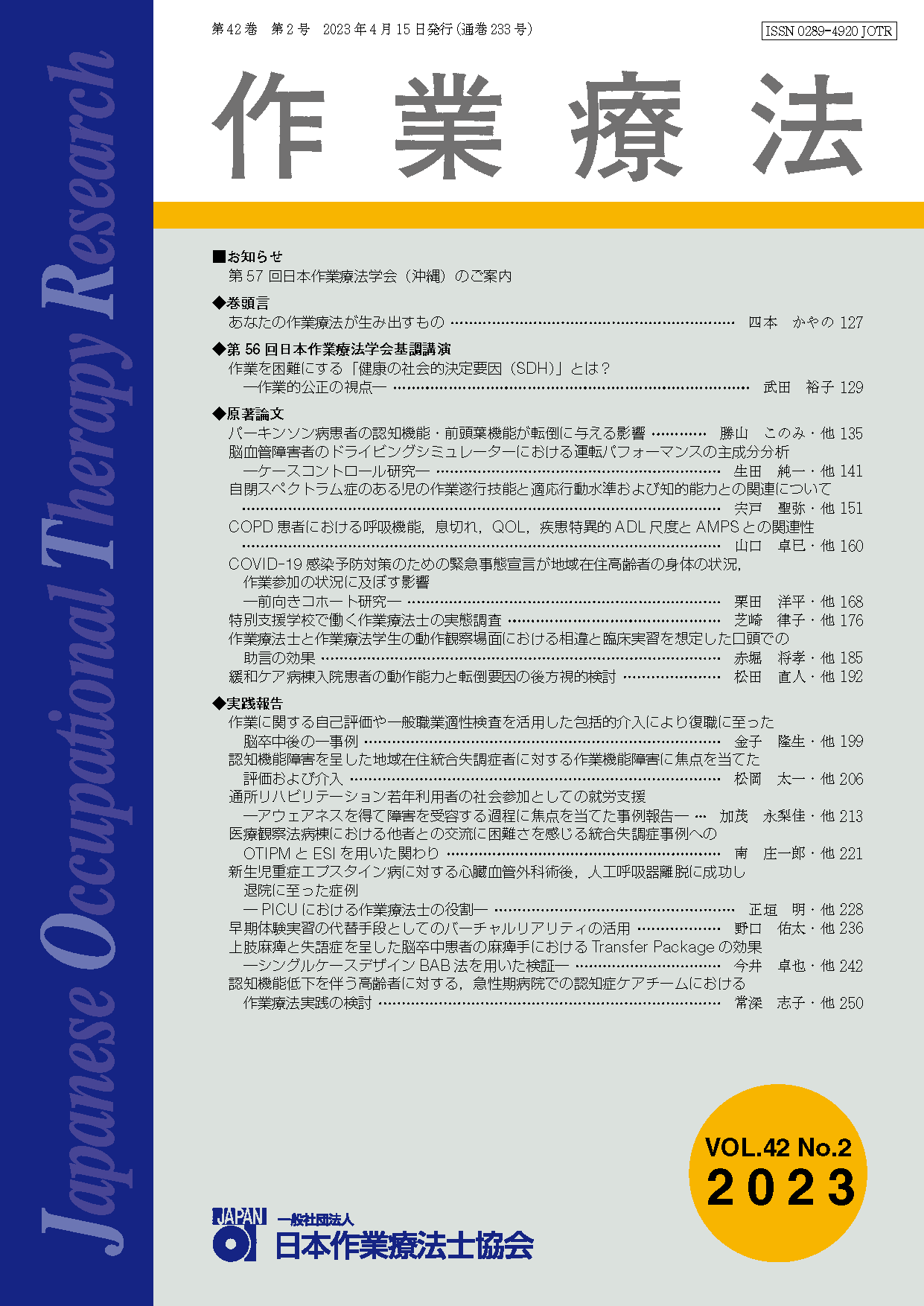Volume 42, Issue 2
Displaying 1-18 of 18 articles from this issue
- |<
- <
- 1
- >
- >|
FOREWORD
-
2023 Volume 42 Issue 2 Pages 127
Published: April 15, 2023
Released on J-STAGE: April 15, 2023
Download PDF (225K)
LECTURES
-
2023 Volume 42 Issue 2 Pages 129-134
Published: April 15, 2023
Released on J-STAGE: April 15, 2023
Download PDF (539K)
ORIGINAL ARTICLES
-
2023 Volume 42 Issue 2 Pages 135-140
Published: April 15, 2023
Released on J-STAGE: April 15, 2023
Download PDF (359K) -
2023 Volume 42 Issue 2 Pages 141-150
Published: April 15, 2023
Released on J-STAGE: April 15, 2023
Download PDF (637K) -
2023 Volume 42 Issue 2 Pages 151-159
Published: April 15, 2023
Released on J-STAGE: April 15, 2023
Download PDF (445K) -
2023 Volume 42 Issue 2 Pages 160-167
Published: April 15, 2023
Released on J-STAGE: April 15, 2023
Download PDF (420K) -
2023 Volume 42 Issue 2 Pages 168-175
Published: April 15, 2023
Released on J-STAGE: April 15, 2023
Download PDF (444K) -
2023 Volume 42 Issue 2 Pages 176-184
Published: April 15, 2023
Released on J-STAGE: April 15, 2023
Download PDF (476K) -
2023 Volume 42 Issue 2 Pages 185-191
Published: April 15, 2023
Released on J-STAGE: April 15, 2023
Download PDF (693K) -
2023 Volume 42 Issue 2 Pages 192-198
Published: April 15, 2023
Released on J-STAGE: April 15, 2023
Download PDF (562K)
PRACTICAL REPORTS
-
2023 Volume 42 Issue 2 Pages 199-205
Published: April 15, 2023
Released on J-STAGE: April 15, 2023
Download PDF (477K) -
2023 Volume 42 Issue 2 Pages 206-212
Published: April 15, 2023
Released on J-STAGE: April 15, 2023
Download PDF (635K) -
2023 Volume 42 Issue 2 Pages 213-220
Published: April 15, 2023
Released on J-STAGE: April 15, 2023
Download PDF (530K) -
2023 Volume 42 Issue 2 Pages 221-227
Published: April 15, 2023
Released on J-STAGE: April 15, 2023
Download PDF (458K) -
2023 Volume 42 Issue 2 Pages 228-235
Published: April 15, 2023
Released on J-STAGE: April 15, 2023
Download PDF (1146K) -
2023 Volume 42 Issue 2 Pages 236-241
Published: April 15, 2023
Released on J-STAGE: April 15, 2023
Download PDF (891K) -
2023 Volume 42 Issue 2 Pages 242-249
Published: April 15, 2023
Released on J-STAGE: April 15, 2023
Download PDF (446K) -
2023 Volume 42 Issue 2 Pages 250-256
Published: April 15, 2023
Released on J-STAGE: April 15, 2023
Download PDF (419K)
- |<
- <
- 1
- >
- >|
